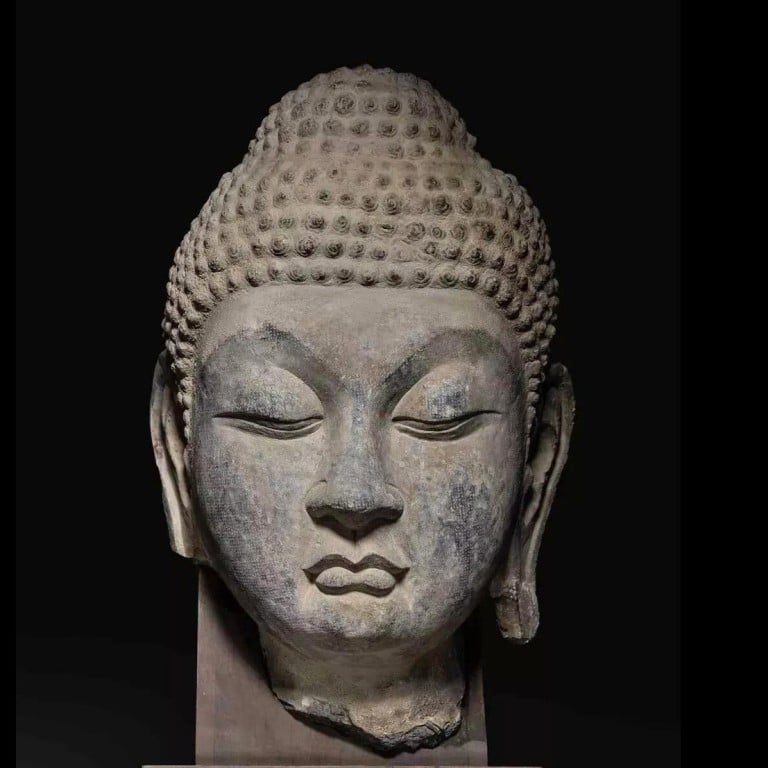
Over 66,000 stolen Chinese artefacts recovered last year amid trafficking crackdown says government
- The crackdown was launched by the National Cultural Heritage Administration (NCHA) and the Ministry of Public Security in 2020
- Authorities said they arrested 61 out of the 62 most-wanted suspects of cultural relic theft
Chinese authorities announced last week they recovered over 66,000 stolen cultural relics in 2021, including catching 650 gangs who were looting and trafficking the artefacts.
“Potential hazards threatening the safety of cultural relics are still common,” he said. “Our mission remains challenging.”

The NCHA said it found 97 new “cultural relic safety and accident” cases in 2021 after inspections, including 82 theft or robbery cases. The rest were either incidents of neglect, fire hazards or accidents.
The crackdown was launched in August 2020 and was extended for another year beginning last August.
According to Xinhua, its goal was to fight crimes that involved ancient cultural sites, tombs, grotto temples, historical buildings, and relics from the country’s history under the Communist Party.
One of the significant victories from the crackdown was recovering a lost volume of Buddhist sutras from the Tang dynasty (618-907), along with six other valuable books that were stolen from a provincial museum in Sichuan in southwest China in 2004.
In 2005, the stolen texts were sold at auction for 308,000 yuan (US$47,800), and it appears there was an attempt to resell them in September 2020. However, the auction house flagged the lot and told authorities that a suspicious set of “letters and ancient books” was set for sale.
In 2016, the State Council issued a regulation banning all looted artefacts from going on auction and said the government would have priority to recover a stolen item. However, with China’s long and vibrant history, stolen goods occasionally fall through the cracks and make it to an auction.
![Authorities are cracking down crimes that target grottos, such as the Tuyugou Grottos in Xinjiang [pictured]. Photo: ecns.cn](https://cdn.i-scmp.com/sites/default/files/d8/images/canvas/2022/04/21/42a675ee-e4b2-4a3f-850f-40720476c669_8e1ea4af.jpg)
Another major dragnet included a series of arrests made in May 2021 to capture 39 suspects who were involved in a 2020 robbery of the tomb of Qian Liu, the first ruler of the Wuyue Kingdom (907–978) during the Five Dynasties and Ten Kingdoms period (907–960).
Two people were found guilty of digging into the tomb and robbing it, which included objects made out of porcelain, gold and jade.
Part of what made the mausoleum a target is it is located just a kilometre outside Hangzhou, in Zhejiang province in eastern China, and is significantly more accessible than other ancient tombs, which tend to be in more remote areas. In 2001, the State Council, China’s top administrative body, said the tomb would come under official national protection.
The police have recovered all 175 artefacts stolen from the tomb, and because the robbers planned to sell them, they were in good condition when they were recovered.
The NCHA said technology played a crucial role in the recent crackdown, which included “smart monitoring systems” and drone patrols at heritage sites.
The agency said that in the Inner Mongolia autonomous region in north China, all 103 county-level governments deploy drones to monitor their heritage sites.
“Technology can make up for a lack of personnel in charge of supervision,” said Song of NCHA.
On April 1, the NCHA instituted a revision to its cultural relics laws to help regulate how to manage underwater artefacts, such as those found in shipwrecks.


